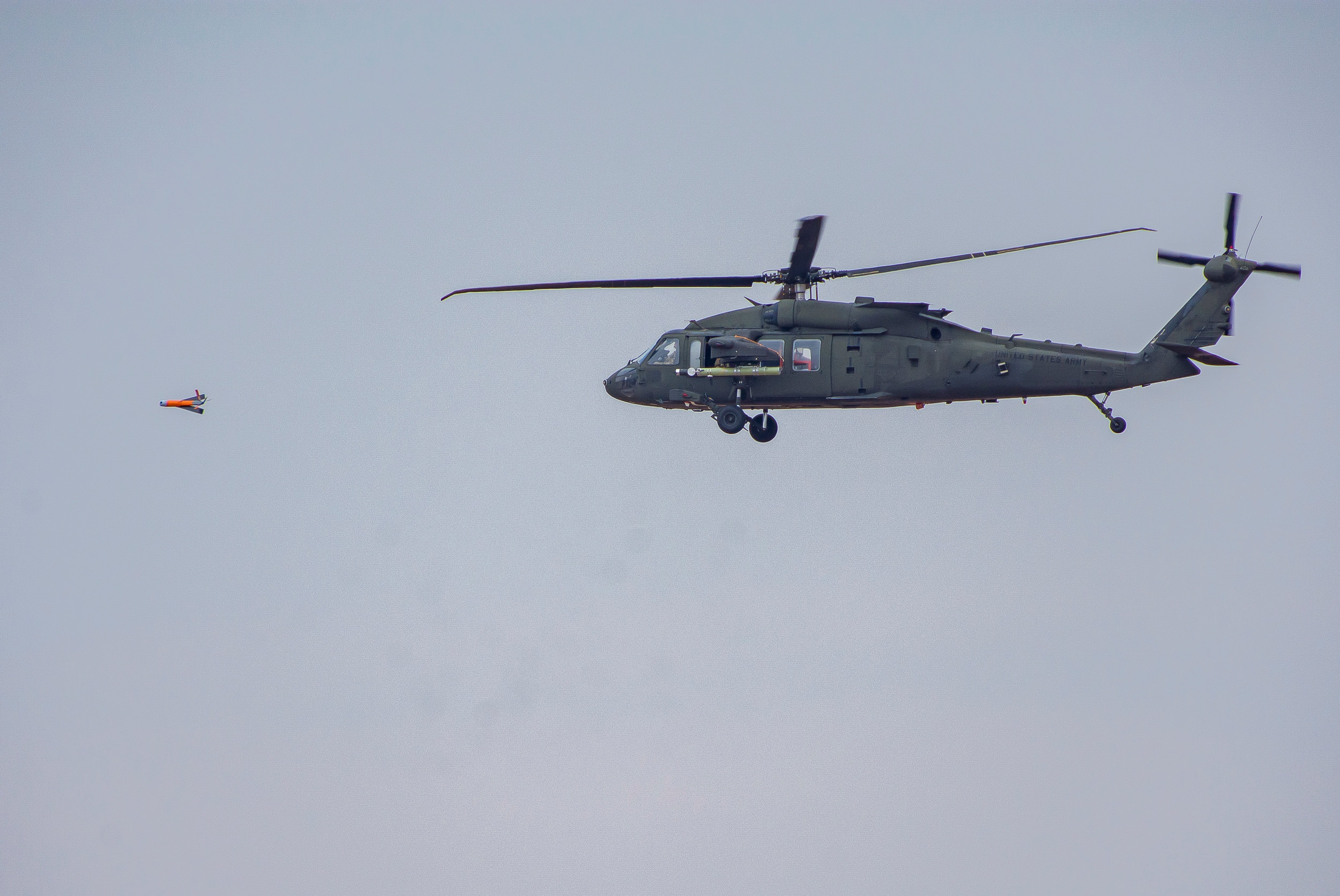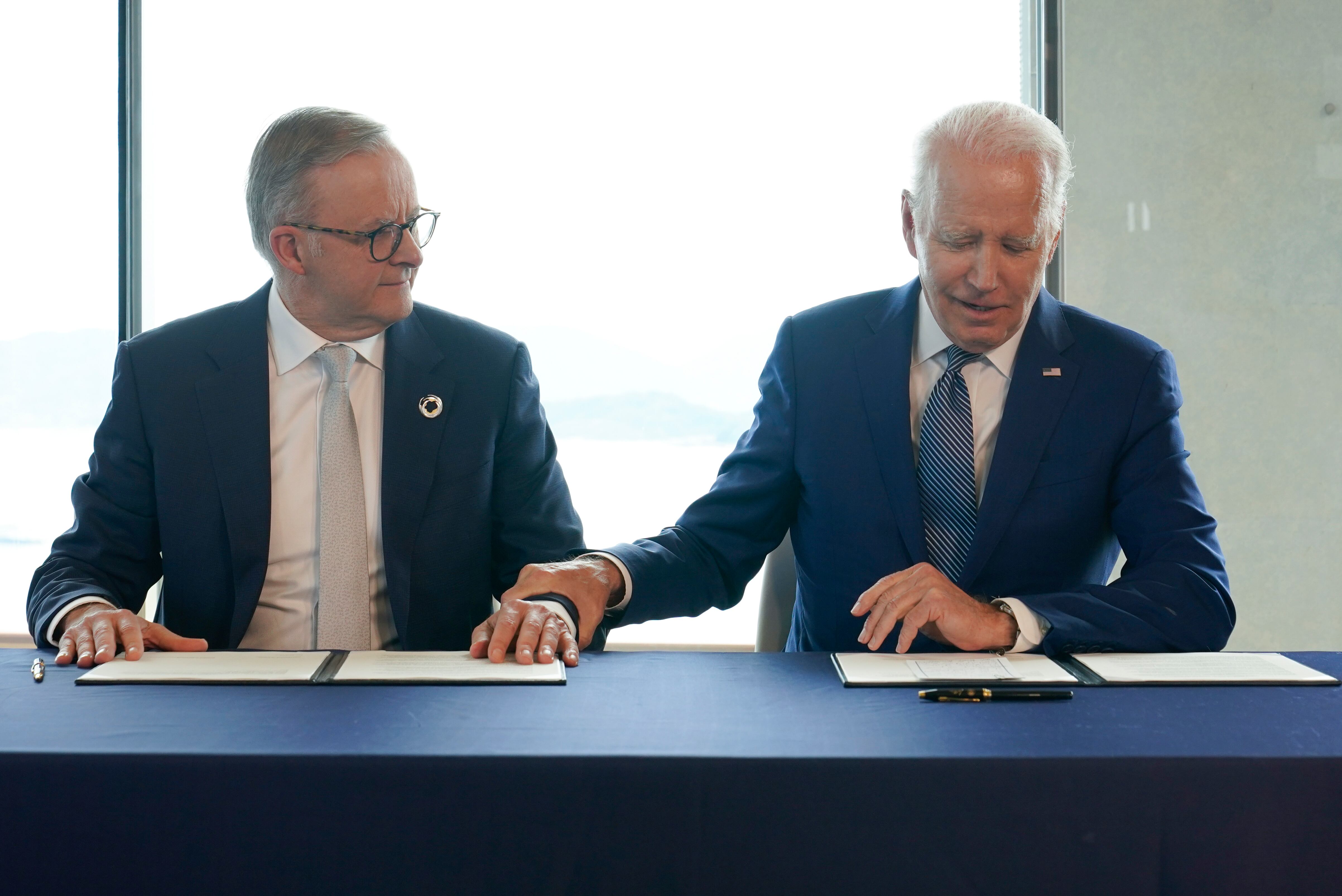WASHINGTON — A swarm of Australian, U.K. and U.S. artificial intelligence-enabled air and ground vehicles collaboratively detected and tracked targets during testing overseas.
The trials conducted by the AUKUS partners delivered several “world firsts,” including the live re-training and international exchange of AI models, according to the U.K. Ministry of Defence, which disclosed the news May 26, a month after testing.
More than 70 military and civilian defense personnel and industry players participated in the experiment, part of the AUKUS Advanced Capabilities Pillar, or Pillar 2, established to expedite the trilateral development of critical technologies, such as AI, quantum, cyber and hypersonics. Pillar 1 — more discussed — aims to help Australia acquire nuclear-powered submarines.
Abe Denmark, the U.S. senior adviser to the secretary of defense for AUKUS, in a statement said the April demonstration was “truly a shared effort.”
RELATED

Together, teams developed models, directed different nations’ uncrewed aerial vehicles and evaluated performance. The joint deployments in the field featured Blue Bear Ghost and Insitu CT220 drones; Challenger 2 main battle tanks and Warrior armored vehicles; Viking uncrewed ground vehicles; a commercial FV433 Abbot self-propelled artillery gun; and a former Eastern Bloc BMP OT-90, an infantry fighting vehicle.
“By pooling our expertise and resources through our AUKUS partnerships,” Denmark said, “we can ensure that our militaries are equipped with the latest and most effective tools to defend our nations and uphold the principles of freedom and democracy around the world.”
Australian, U.K. and U.S. leaders have described AI as critical to international competitiveness in many sectors, finance, health and defense among them. By sharing AI and its underpinnings, the U.K. Ministry of Defence said in its announcement, the friendly militaries can figure out interoperability now, and not later, as well as save time and money.
RELATED

The U.S. Department of Defense’s fiscal 2024 budget blueprint featured a $1.8 billion allocation for AI, with Deputy Defense Secretary Kathleen Hicks describing it as a “key technology” area. The department catalogued at least 685 ongoing AI projects as of early 2021, including several tied to major weapons systems.
Colin Demarest was a reporter at C4ISRNET, where he covered military networks, cyber and IT. Colin had previously covered the Department of Energy and its National Nuclear Security Administration — namely Cold War cleanup and nuclear weapons development — for a daily newspaper in South Carolina. Colin is also an award-winning photographer.








